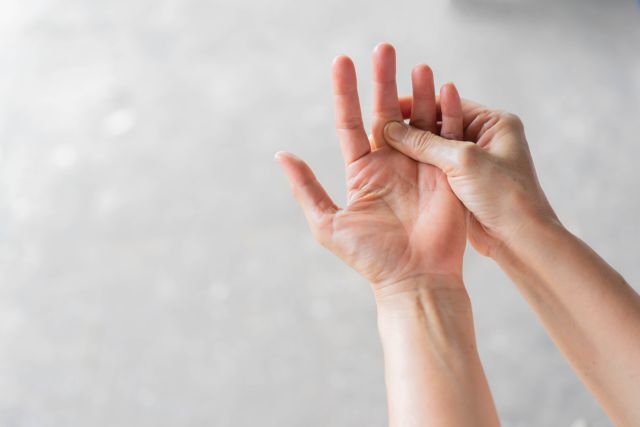Updated on April 12, 2022.
Rheumatoid arthritis (RA) is an autoimmune disease and chronic inflammatory condition that causes pain, redness, heat, swelling, and stiffness in the joints and surrounding cartilage and bone. RA most often affects the hands, including wrists and finger joints, but it can attack just about any joint in the body, including your feet, knees, elbows, hips, shoulders, and others.
Inflammation from RA not only causes pain, but also erodes the cartilage and bone in the affected joints, which can cause joint deformity over time. Other parts of the body, including your heart, lungs, eyes, nervous system, and gastrointestinal tract, can also be affected by RA.
The severity and course of rheumatoid arthritis vary from person to person, and symptoms may come and go (called flares and remissions). While RA often gets worse over time, new advances in treatment now make it possible to slow or stop its progression, in addition to relieving symptoms. Left untreated—or undertreated—as many as 50 percent of people with RA will experience some degree of disability, so early, aggressive treatment is key.
Rheumatoid arthritis can also affect you whether you're young or old. The American College of Rheumatology estimates that 1.3 million Americans have the condition. Signature signs of RA include:
- Morning joint stiffness that lasts more than one hour
- Painful, stiff, or swollen joints
- Symmetrical joint pain (joint pain on both sides of the body)
- Pea-sized lumps, called nodules, under the skin (usually near a joint)
- Fatigue
- Chronic low-grade fever
- Loss of appetite
- Swelling in your ankles or behind your knees
If you experience any of these symptoms—particularly joint discomfort—for more than two or three weeks, make an appointment to see a healthcare provider. If it is rheumatoid arthritis, your best chance of stopping it is with early, intensive therapy—ideally within three to six months of your first symptoms. If RA isn't the problem, your symptoms could signal another serious condition, such as a viral or bacterial infection, Lyme disease, lupus, fibromyalgia, or an injury.






